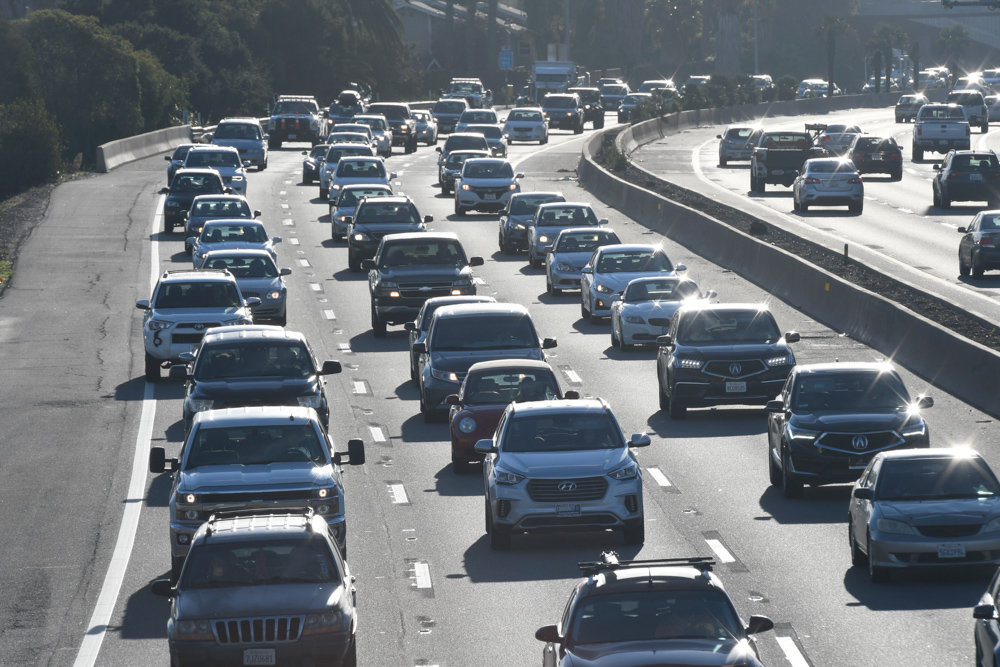Santa Barbara Posts Best Air Quality in 40 Years Just as Trump Attacks
California Will Fight to Keep Its Right to Have Clean Air

I totally get America’s love affair with the automobile. I’m hardly immune. There’s nothing more ridiculously wonderful than burning carbon down Highway 101 — my elbow akimbo out the window, the vast awesomeness of the Pacific Ocean beckoning to the right.
I mention this in connection with the president’s declaration of war this week on California’s special right to set its own air quality standards. When the Trump administration announced its intention early on to roll back national mileage requirements from 51 miles per gallon to 34, California made it clear it would not go gentle into the White House’s long, dark night. That’s because for 49 years, the federal government has recognized California’s legal right to set stricter standards than those imposed by the federal Clean Air Act, enacted in 1970.
By the 1960s, California was shrouded in a thick blanket of lung-crushing smog. In 1966, the state — led by then-Governor Ronald Reagan — found itself forced to jump into the fray, creating a new regulatory bureaucracy empowered to clean up the air. Not only did California get there first, it turned out it got there better. It’s been so effective that by 1975, the feds passed follow-up legislation allowing 13 other states the same “waiver” it granted California.
When four major automobile manufacturers — Ford, VW, Honda, and BMW — announced this month that they intended to comply with California’s tougher standards — 50 miles a gallon, rather than Trump’s flaccid 34 — the president quickly retaliated. This week, the president’s EPA director announced he is revoking California’s special legal waiver to go its own way. California, predictably, has vowed to fight Trump in the courts for decades to come, if need be.
For Santa Barbara County, the timing could not be more striking. This month — for the first time in more than 40 years — the county’s Air Pollution Control District (APCD) recorded not one single federal ozone violation when it comes to air quality. To put that in context, we were averaging more than 100 a month in the 1990s. If we continue at our current pace, Santa Barbara County is poised to meet the state’s even stricter air quality standards for ozone next year. Coincidentally, that will be the 50th anniversary of the APCD. If and when this happens, Santa Barbara will be just the 14th of California’s 58 counties to attain this achievement. This has happened at the same time the county’s population increased by at least 50,000 people and as the number of vehicle miles driven on county roads per day has increased by 100 percent.
Ozone is created when sunlight and heat mix with volatile organic compounds (VOCs) — like gasoline fumes and paint solvents — and oxides of nitrogen, better known as NOx, which are produced by the combustion of fuels. Ozone, when high in the sky, blocks solar radiation that causes skin cancer. When low to the ground, however, it chemically immobilizes the human lung’s capacity to repair itself and to absorb oxygen. In other words, it’s not a hypothetical threat.
The county’s new ozone numbers happened because of a million small changes — some bitterly resisted by industry as “economically infeasible.” Some of it happened because of induced changes as well, like the clunker buyback program or getting shipping tankers to slow down as they sail through the channel. Back in the 1980s, Santa Barbara County insisted on regulating the air pollution produced by offshore oil platforms. At the time, Exxon famously told the county “to stick it in its ear,” arguing the county lacked jurisdictional authority to regulate federal waters. Legally, it was a compelling argument. In one of the county government’s most heroic hours, the board of supervisors and air pollution control wonks responded with a full court lobbying press. No arm was left untwisted. What happened in federal waters, they argued, didn’t stay in federal waters. Their argument won.
At the risk of stating the obvious and the predictable, there is climate change to think of. In this context, Trump’s proposed retreat on fuel standards qualifies as yet another sprint in precisely the wrong direction. Again, the implications are anything but theoretical. In less than ten years, for example, the City of Santa Barbara’s sewage treatment facility will begin to feel the impact of sea-level rise — triggered by climate change — as sea water increasingly, if occasionally, chokes the system as it seeps into manholes and sewer mains that run along the waterfront. By 2060, our sewage treatment plant will find itself increasingly challenged by higher high tides; when there are storm events, these will be higher still. By the turn of the century — if nothing is done — we can just kiss it goodbye. Actually, the problem will be that we can’t. The “it” in this equation refers to the 2.1 billion gallons of raw sewage we now treat annually. That’s six million gallons a day.
It doesn’t get more basic than that.
Right now, City Hall spends $22 million a year making sure that stuff goes away. We have 58 people on the job. That’s one for every 1,600 residents.
I have no idea how much it will cost to armor the treatment plant. Or figure out a strategy of managed retreat. Right now, nobody else does either. They are, I am assured, working on it.
I love driving down the coast and smiling at the ocean. I just want it to smile back.



